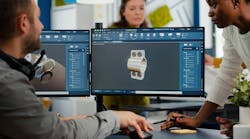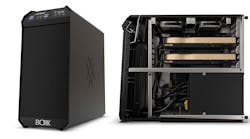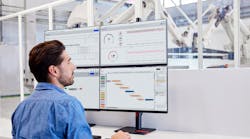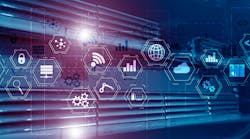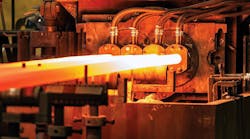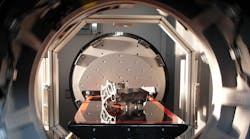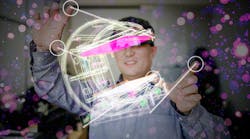Many people think of virtual reality (VR) as suitable only for gaming or entertainment, but the aerospace and automotive industries, in particular, have been using virtual prototypes and simulators for several years. Today, industrial companies are using VR to reduce costs, give virtual tours, inspect equipment and processes, conduct training, showcase equipment, and design factory layouts.
Bringing more effective visualization to the initial product development stage is happening now and is pretty exciting news — especially for foundries and suppliers to the foundry industry. How many times have you seen a process or piece of equipment, perhaps in another country, and thought, “We should be doing that!,” but you don’t even know how to determine if it is right for your organization? In the past, your only choice was to hop on a plane to see it in person.
Seeing equipment and processes in action is always a more powerful statement about how that equipment actually will work and perform in your facility. However, frequently, the equipment is too large or the process you are imagining is too complex to be shown. Therefore, you’ve either had to reject it as unconfirmed, or take a ‘best guess’ as to how it would perform based on drawings. Until now.
All of your decision-making changes when you start considering technical 3D modeling, which includes 3D animation and virtual reality. And, all of this is now available (and affordable) to any manufacturing facility.
For both 3D animation and VR, models of an environment or equipment are created in the computer. In some cases, already existing CAD models can be reused to create animations or VR simulations. Either 3D animation or VR can show things that a video or photos cannot. A 3D animation is essentially a movie that you can watch, but not interact with. A VR simulation allows you to view things from any angle, move around in the virtual space, and even allows the possibility of interacting with virtual objects and equipment.
In a foundry, VR or 3D animations would be beneficial for these typical manufacturing situations:
Adding Equipment — It is not uncommon for a foundry to install a new, larger piece of equipment to produce larger parts. However, in adding the equipment the operators frequently face an unpleasant, and completely unexpected, shuffling of the process flow. Using either 3D animation or virtual reality can reveal in detail how the equipment will be placed, and eliminate the headaches before the equipment is delivered.
Foundry Layout — Even when a new facility is complete, the operators often find that a key process is disrupted because the ventilation system or some other critical element somehow was not considered in the project planning, and cannot be repositioned after the installation.
3D animation or VR will reveal the obstacles and allow the planners to readjust the layout. It also can allow people in different places to “enter” the virtual environment together, to discuss changes and make real-time adjustments to the virtual layout, thereby eliminating obstacles before they are a reality.
Equipment Evaluation & Inspection — Inspecting equipment before the supplier ships it can also be a gamble. While run-offs are important, they are simply not occurring in your facility with your production environment and therefore only provide you with a theoretical ‘idea’ regarding how it will run in your shop. And, by then, if a key element was missed, it is a costly venture to fix it at that stage.
With virtual reality you can preview the equipment and how it will perform in the design stage, to verify its performance and identify potential problems before they arise. And, you can do this comfortably from your office even on another continent.
Training, Troubleshooting & Maintenance — VR is an especially effective training tool. Side panels, safety guards, or other parts can be removed or hidden to review inner workings. Components can be labeled easily, for additional information, and above all, the equipment can be handled safely, even while simulating full operation.
In VR, it is also easy to provide a training environment, complete with appropriate distractions (foundry noises, alarms, etc.) and to execute commands when different patterns are selected, to test for more than one condition that the operator may be seeing.
For maintenance and service departments, VR can be used to appropriately provide the typical service scenarios, and how to solve for them properly.
Virtual Product Catalogs — Virtual catalogs allow you to review a new technique or piece of large equipment as initial investigation.
VR and technical 3D animations allow engineering teams to collaborate efficiently (and across all geographic borders) at the earliest stages to ensure the design is exactly what you want, and how you want it. All of this will ensure better products and processes for your production.
Ultimately, these technical visualization methods will deliver better products to market, decrease development costs, and overall, shorten the lead times to market.


